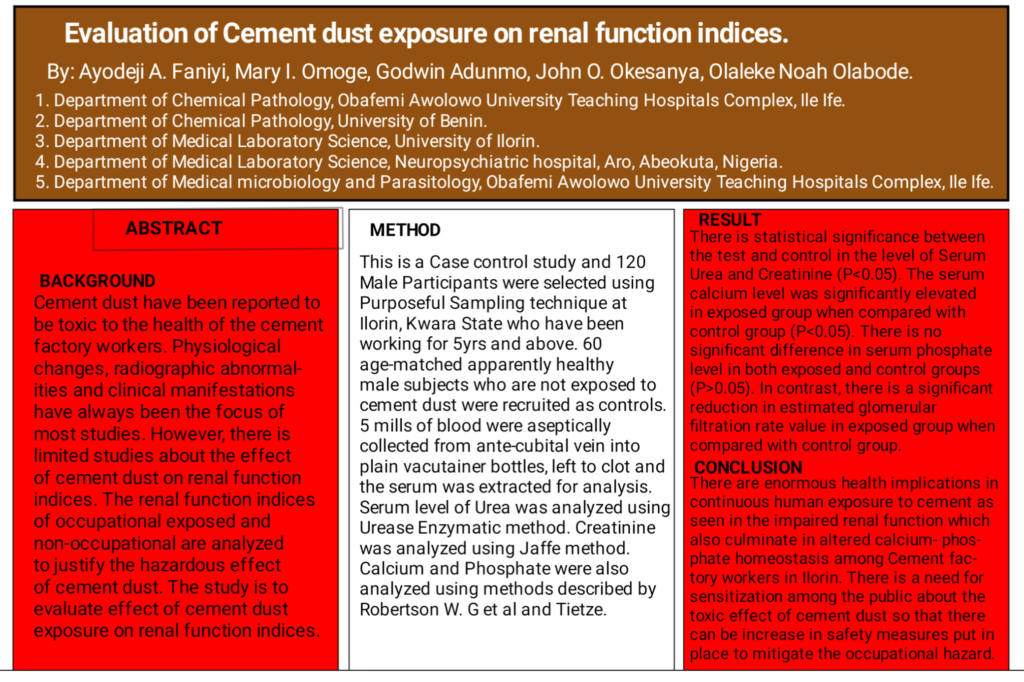Ayodeji Amos Faniyi
Conference 2023 Presentation
Project title
Evaluation of Cement dust exposure on renal function indices
Authors and Affiliations
Ayodeji A. Faniyi 1, Mary I. Omoge2 John O. Okesanya3, Olaleke N. Olabode1, Adunmo Godwin 4
1. Department of Medical Laboratory Science, Obafemi Awolowo University Teaching Hospitals Complex, Ile Ife, Osun State, Nigeria
2. Department of Medical Laboratory Science, University of Benin Teaching Hospital Benin, Edo State, Nigeria
3. Department of Medical Laboratory Science, Neuropsychiatric hospital, Aro, Abeokuta, Nigeria
4. Department of Medical Laboratory Science, University of Ilorin, Kwara State, Nigeria,
Abstract
Background
Cement dust have been reported to be toxic to the health of the cement factory workers. Physiological changes, radiographic abnormalities and clinical manifestations have always been the focus of most studies. However, there is limited studies about the effect of cement dust on renal function indices. The renal function indices of occupational exposed and non-occupational are analyzed to justify the hazardous effect of cement dust. The study is to evaluate effect of cement dust exposure on renal function indices.
Methods
This is a Case control study and 120 Male Participants were selected using Purposeful Sampling technique at Ilorin, Kwara State who have been working for 5yrs and above. 60 age-matched apparently healthy male subjects who are not exposed to cement dust were recruited as controls. 5 mills of blood were aseptically collected from ante-cubital vein into plain vacutainer bottles, left to clot and the serum was extracted for analysis. Serum level of Urea was analyzed using Urease Enzymatic method. Creatinine was analyzed using Jaffe method. Calcium and Phosphate were also analyzed using methods described by Robertson W. G et al and Tietze.
Results
There is statistical significance between the test and control in the level of Serum Urea and Creatinine (P<0.05). The serum calcium level was significantly elevated in exposed group when compared with control group (P<0.05). There is no significant difference in serum phosphate level in both exposed and control groups (P>0.05). In contrast, there is a significant reduction in estimated glomerular filtration rate value in exposed group when compared with control group.
Conclusions
There are enormous health implications in continuous human exposure to cement as seen in the impaired renal function which also culminate in altered calcium- phosphate homeostasis among Cement factory workers in Ilorin. There is a need for sensitization among the public about the toxic effect of cement dust so that there can be increase in safety measures put in place to mitigate the occupational hazard.

